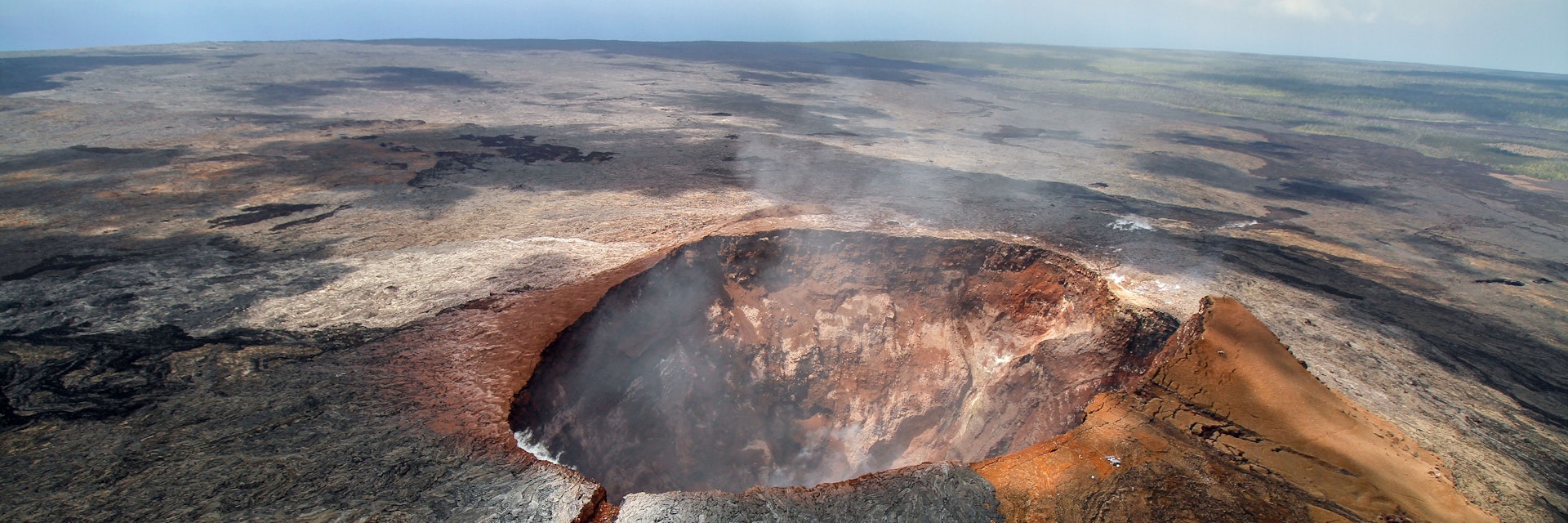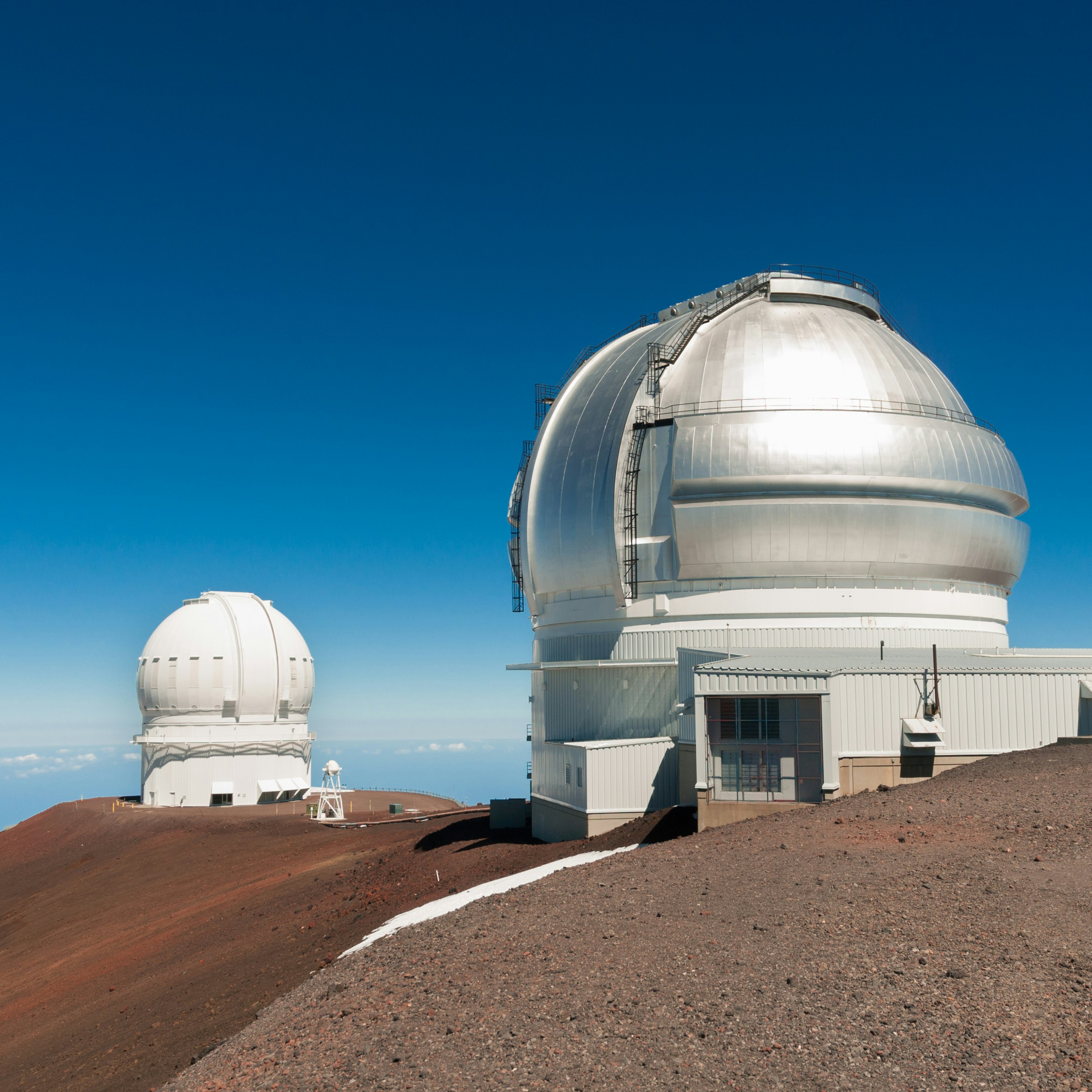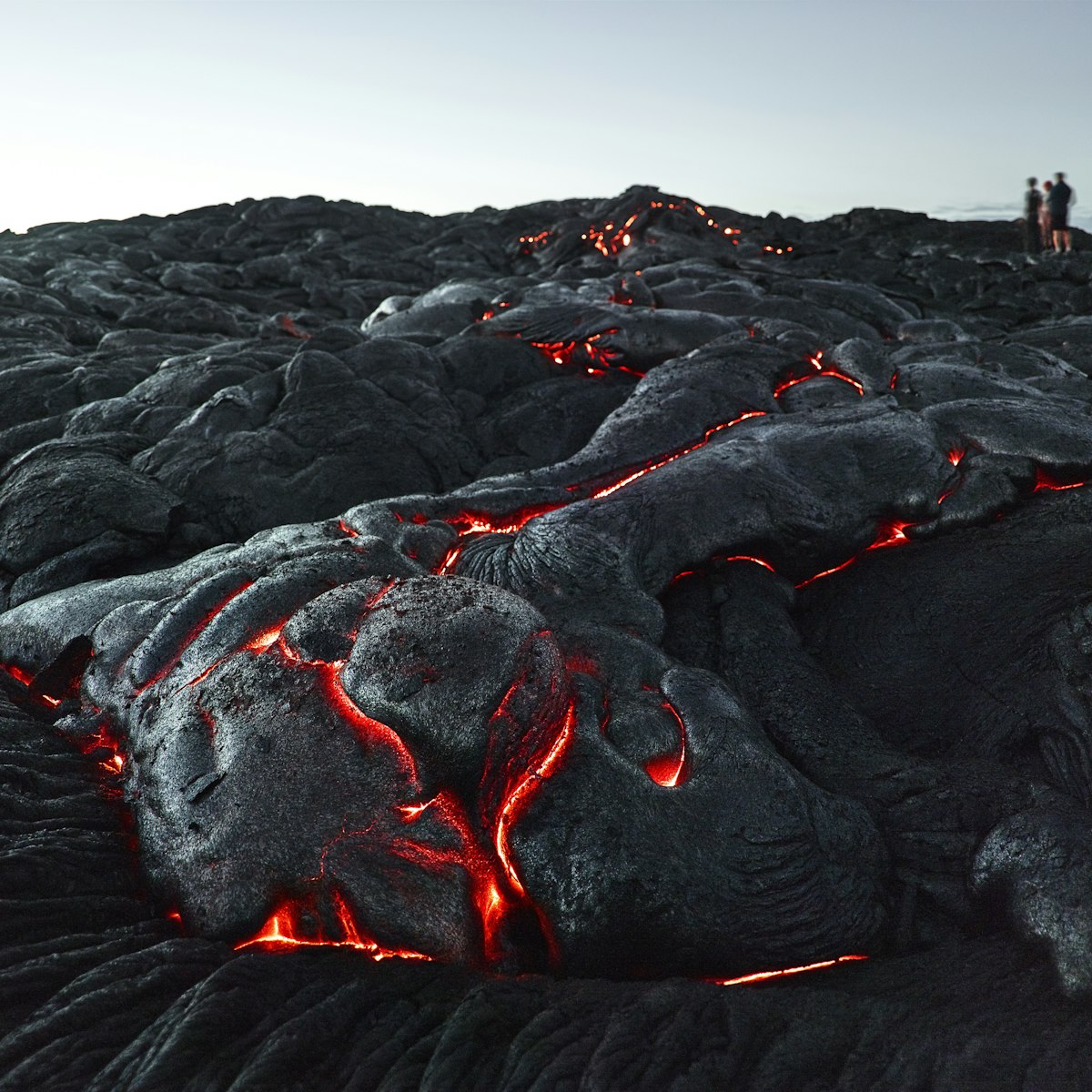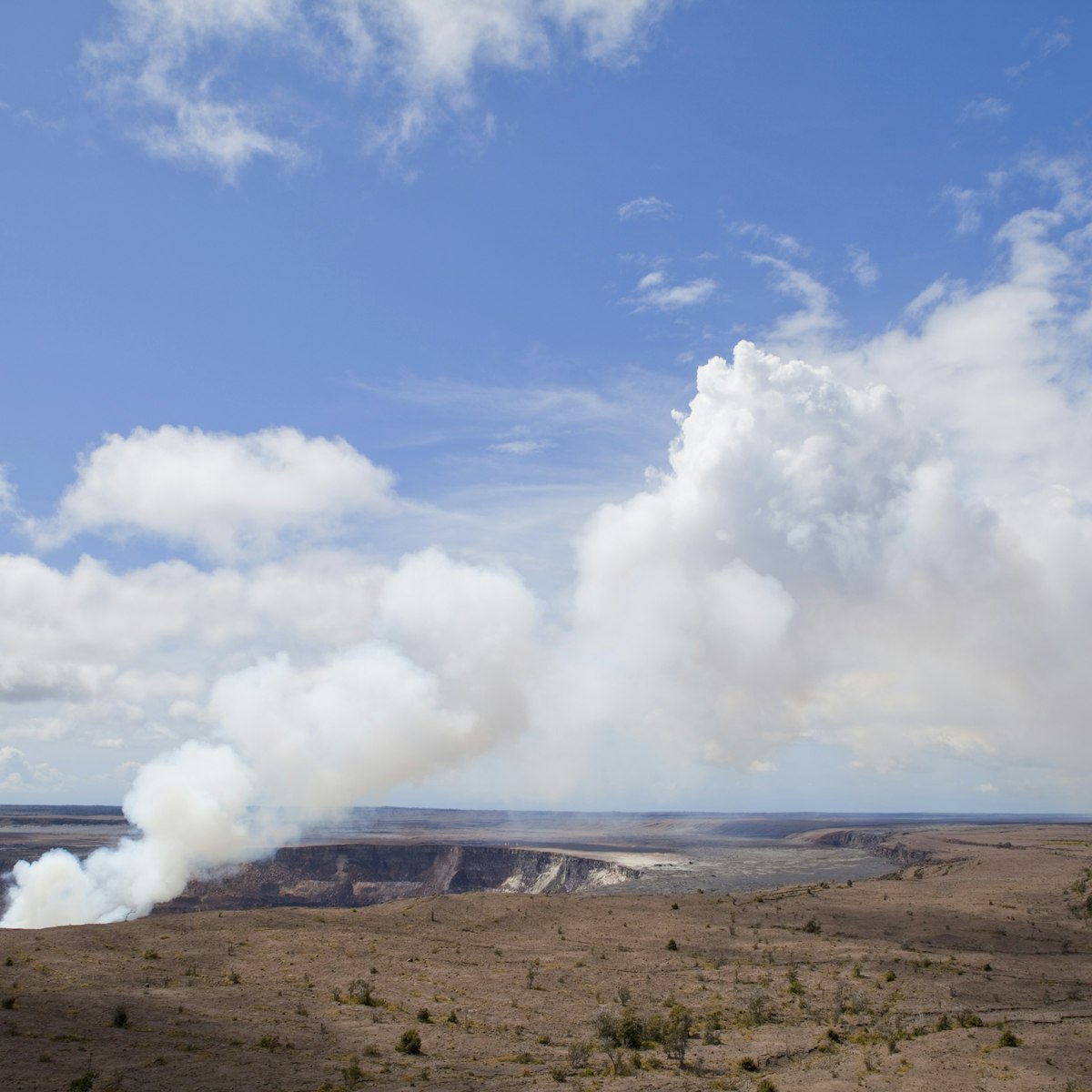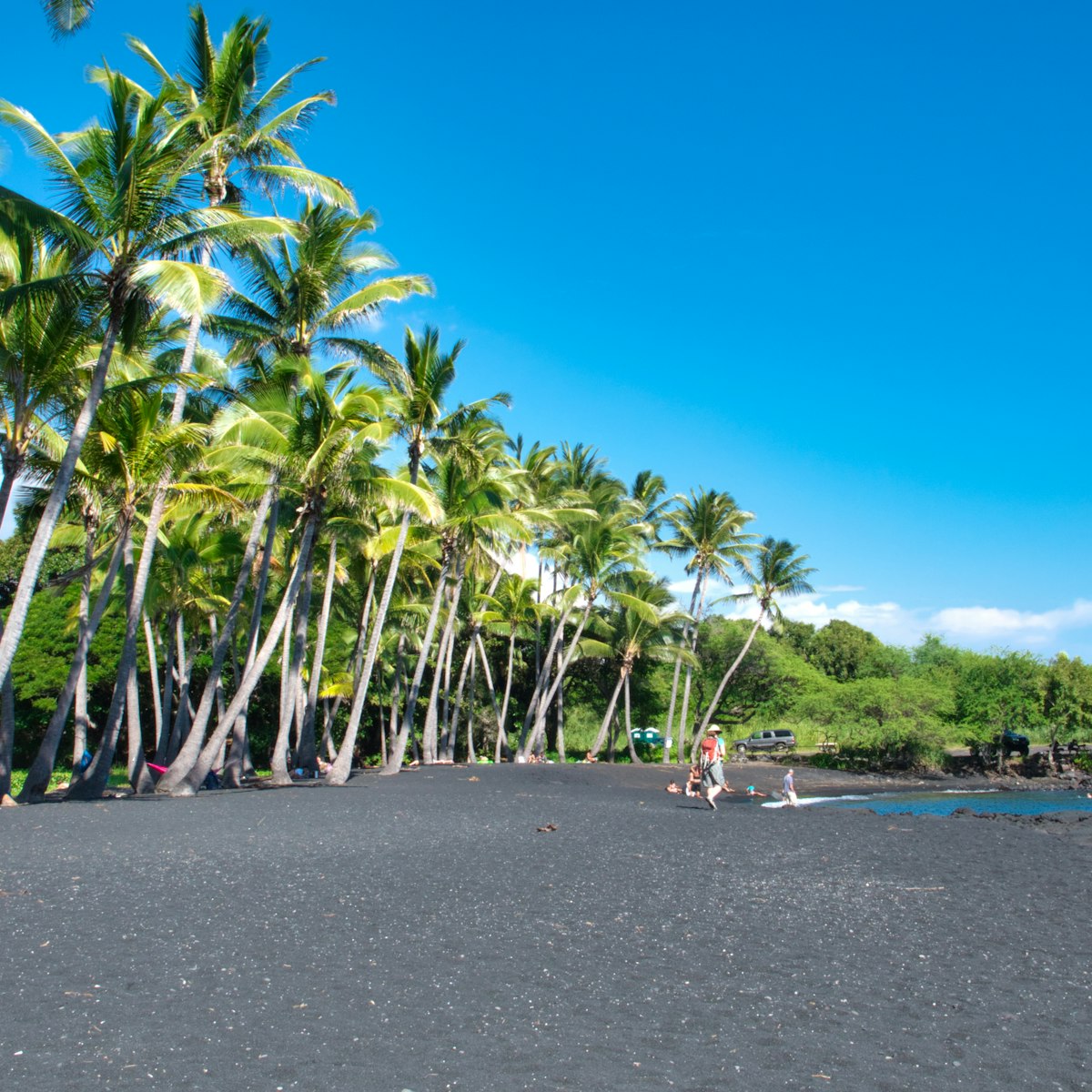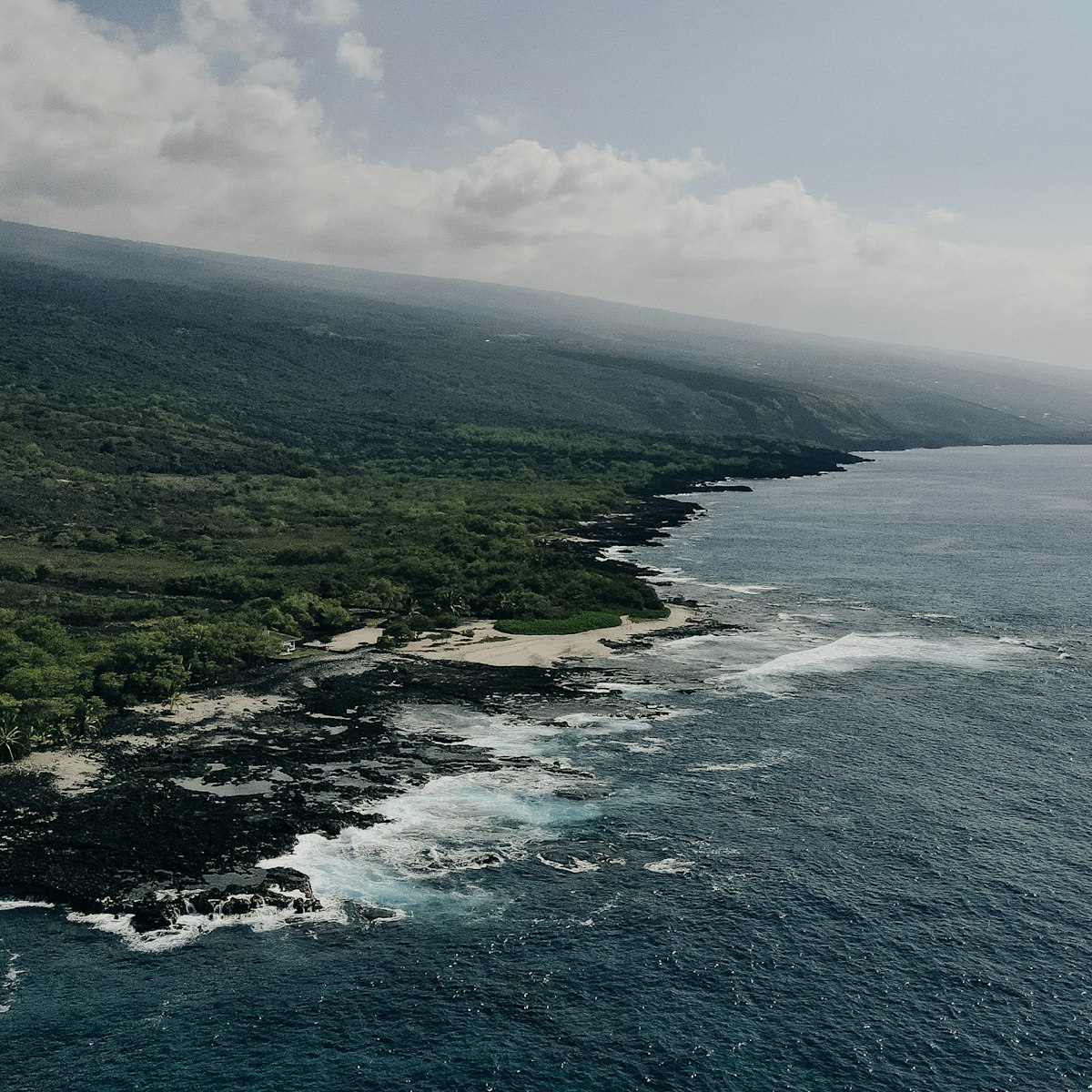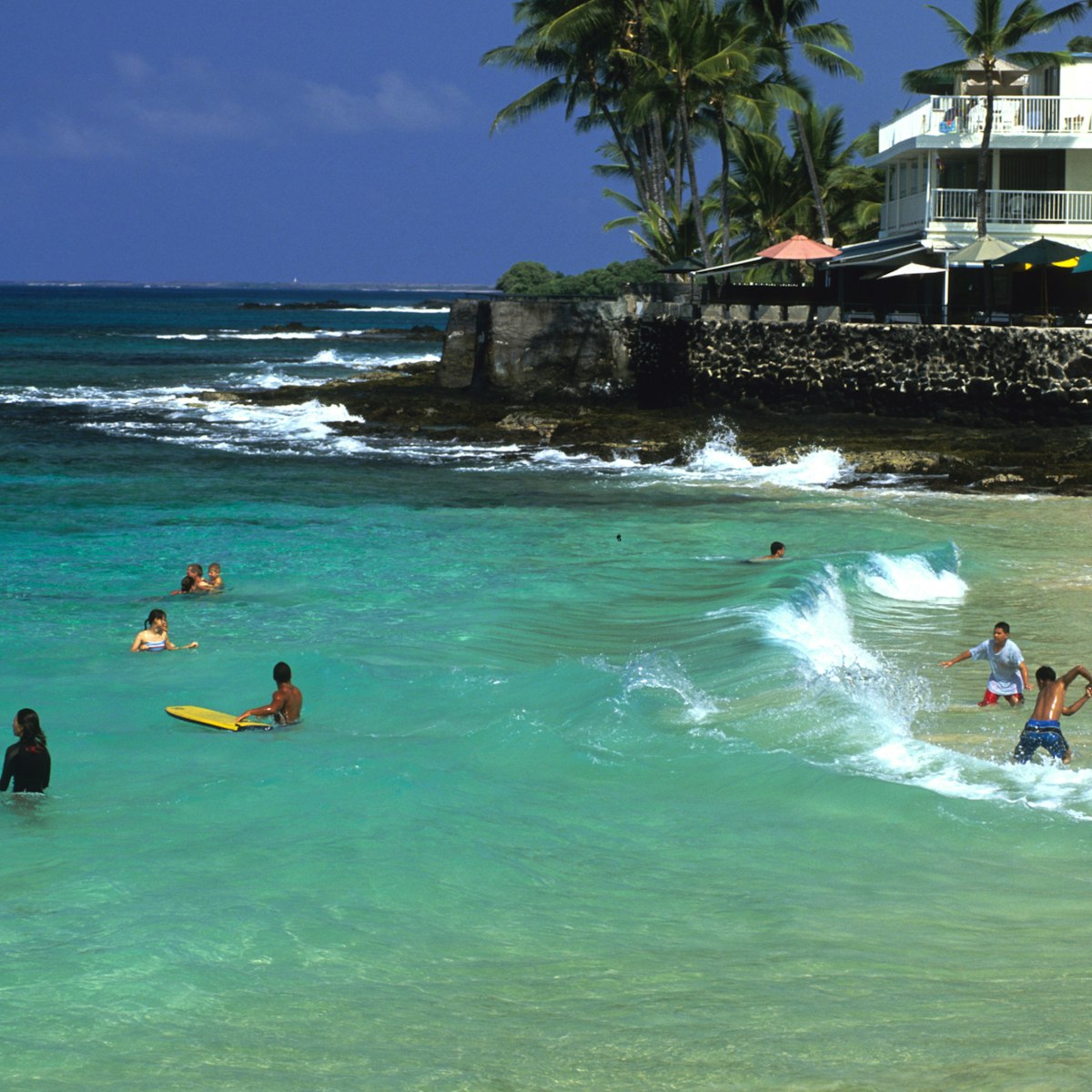The world's largest subaerial (above water) volcano, Mauna Loa (Long Mountain) is so massive that you feel its presence more than see it. Even when it doesn't have its head in the clouds, it's impossible to pick out its summit (13,678ft) – the curse of a shield volcano which builds slowly from lava oozing down its flanks. Its bulk makes up half the Island of Hawaiʻi, stretching over 60 miles long and covering an area of 2035 sq miles.
Mauna Loa is so heavy that it has actually compressed the earth's crust underneath it, essentially sitting in the bottom of a 26,000ft (5-mile) deep bowl in the ocean floor. This means that from its true base to the summit, the volcano is 56,000ft (10.6 miles) tall.
Unlike most volcanoes, Mauna Loa does not sit on the intersection of two tectonic plates, but rather gets its eruptive inclinations from a stationary 'hot spot' below the crust: a mass of magma pushing upwards as the plate moves over it. Since 1843 (when we really started keeping track of these things) Mauna Loa has erupted 33 times, usually starting with activity at the summit caldera before letting off pressure at its flanks along the rift zones. Its 1868 eruption caused the largest earthquake recorded in Hawaii.
Mauna Loa's 4-mile by 1.5-mile summit crater, Mokuʻaweoweo (literally 'fish section,' likely referring to the red flesh of the ʻaweoweo fish), formed around 750 years ago when the magma vacated the summit through a vent near modern-day Kulani Prison.
Due to the frequent eruptions and its relatively high elevation, not much lives on top of Mauna Loa, save some moss in damp lava tubes and a few insects. The area above 10,000ft is appropriately called the 'alpine stone desert,' and much of it is periglacial (shaped by freeze-thaw processes).
Native Hawaiians believe the mountain is sacred, and throughout history holy men would make treks to the summit via the ʻAinapo Trail to set offerings at the caldera. The first European to reach the summit, Archibald Menzies, did so on his third attempt in 1794. His barometric measurements of the elevation (13,635ft) were surprisingly accurate.
